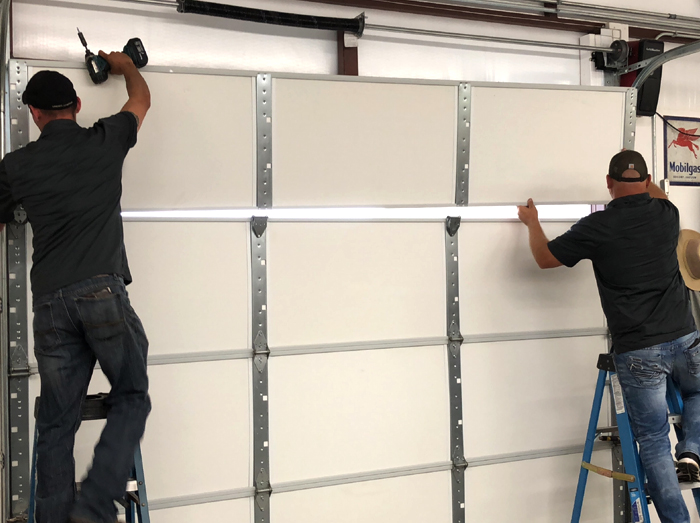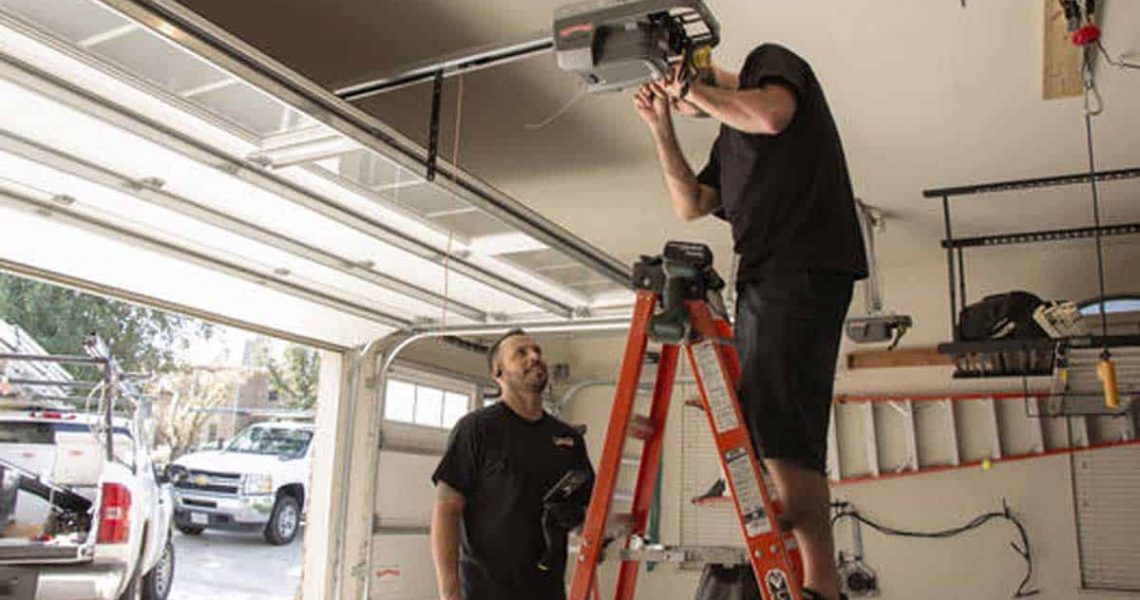Step-by-Step Directions for Addressing Common Garage Door Repairs at Home
Navigating common garage door fixings can be a workable job for property owners with the right approach. As we check out each fixing procedure, you'll find practical strategies that can improve the long life of your garage door, establishing the stage for a much more efficient home maintenance routine.
Troubleshooting a Stuck Garage Door
Experiencing a stuck garage door can be discouraging, particularly when it disrupts your day-to-day routine. Dust, leaves, or even little items can restrain the door's movement.
Following, take a look at the rollers and hinges. Try to find indicators of wear or damage, as these parts are vital for smooth procedure. Lubing these get rid of a silicone-based spray can improve capability and lower rubbing.
In addition, check the placement of the tracks. Misaligned tracks can trigger the door to jam. If you notice a misalignment, delicately touch the tracks back into placement making use of a rubber mallet.
Last but not least, make sure that the garage door opener is functioning correctly. Pay attention for any kind of unusual sounds or failing to respond. If the opener is malfunctioning, getting in touch with the supplier's instructions or speaking to a professional might be required. By complying with these troubleshooting steps, you can properly deal with a stuck garage door and recover its capability.

Repairing Noisy Garage Door Openers
A loud garage door opener can be a substantial aggravation, interfering with the tranquility of your home and indicating prospective mechanical problems. Resolving this problem without delay can boost both the functionality of the opener and the comfort of your living area.
Next, examine the rollers for wear or damages. If they show up cracked or used, think about changing them with nylon rollers, which have a tendency to operate more quietly.
Lubrication is vital for a smooth operation. Make use of a silicone-based lube on the relocating parts, including rollers, hinges, and tracks. Avoid making use of oil, as it can attract dirt and debris, resulting in further issues.

Fixing Broken Springs
Damaged garage door springtimes can jeopardize the whole system, making the door inoperable and positioning safety risks. These springtimes are critical for reversing the weight of the garage door, making its operation smooth and reliable. When a springtime breaks, it can lead to the door dropping quickly or coming to be stuck, producing prospective risks for individuals.
To fix damaged springtimes, first, ensure safety and security by detaching the garage door opener and safeguarding the door in the shut setting. For torsion springtimes, meticulously take a break the stress utilizing suitable devices, ensuring to use safety goggles and handwear covers.
As soon as the tension is eased, get rid of the old springtimes and change them with brand-new, appropriately ranked springs. Guarantee all components are safely secured and reconsider the door's equilibrium by manually lifting it midway. Finally, reconnect the browse around this site garage door opener and conduct a test to guarantee smooth operation. If uncomfortable executing this repair work, employing a professional is suggested to prevent mishaps and make sure the task is done properly.
Aligning Misaligned Tracks
Proper alignment of garage door tracks is necessary for the effective and risk-free operation of the door. Misaligned tracks can cause the door to bind, making it difficult to open up or shut, and might result in more damage over time. To address this concern, first, make certain the door is totally shut to stop any type of injury during the repair work process.
Begin by visually inspecting the tracks for any type of bends or distortions. Utilize a level to examine if the tracks are vertically aligned. If they are not, carefully tap the track with a rubber club to realign it. Take care not to use extreme pressure, as this can lead to more damage.
Following, examine the brackets that hold the tracks in area. If they hang, tighten up the screws with a socket wrench. For tracks that are considerably misaligned, it might be needed to eliminate the track from its brackets, change its placement, and after that reattach it securely.

Changing Damaged Garage Door Panels
When confronted with damaged garage door panels, it's critical to deal with the problem without delay to keep the door's performance and visual website link appeal. The initial step in replacing damaged panels is to analyze the degree of the damage. If the damage is limited to a couple of panels, substitute is typically much more cost-effective than changing the whole door.
Begin by buying substitute panels that match your existing garage door. Ensure you get the appropriate dimension and style, as garage doors come in numerous designs and materials.
After installation, reconnect the garage door opener and test the door to guarantee it runs efficiently. Regular maintenance and prompt fixings can expand the life of your garage door, ensuring its ongoing performance and aesthetic allure.
Conclusion
Resolving problems such as stuck doors, Read Full Report loud openers, broken springs, misaligned tracks, and harmed panels guarantees ideal performance and lengthens the lifespan of the garage door system. Adopting these practices not only improves the convenience of making use of a garage door however additionally adds to overall home security and protection.